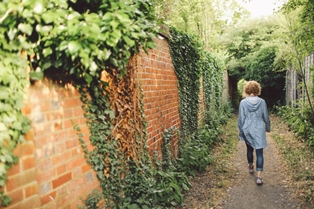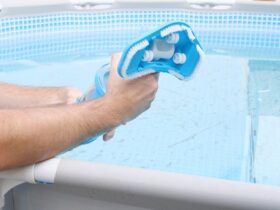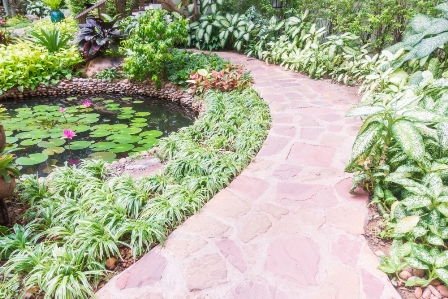In the realm of landscaping and gardening, the importance of garden edging cannot be overstated. A well-defined border not only adds aesthetic appeal to your outdoor space but also serves functional purposes such as delineating different areas, preventing the spread of weeds, and facilitating easier maintenance. We understand the significance of achieving the perfect garden edge, and we’re here to guide you through the process with our expert tips and techniques.
Understanding the Importance of Garden Edging
Before delving into the various garden edging techniques, it’s essential to grasp why edging is crucial for your garden. One of the primary benefits of garden edging is its ability to create a clean and polished look by defining the borders of flower beds, pathways, and other garden features. This delineation adds structure to your outdoor space, enhancing its visual appeal and creating a sense of organization.
Moreover, proper garden edging helps prevent the intrusion of grass and weeds into your flower beds and garden pathways. By creating a physical barrier between different areas of your garden, you can effectively contain plants and prevent them from encroaching on spaces where they’re not desired. This containment minimizes the need for frequent weeding and maintenance, saving you time and effort in the long run.
Choosing the Right Edging Material
When it comes to selecting garden edging materials, the options are virtually endless. From traditional choices like wood and metal to more contemporary options such as stone and concrete, each material offers its own unique benefits and aesthetic appeal.

Wood Edging:
Ideal for a rustic or natural look, wood edging is versatile and easy to work with. However, it may require more maintenance over time due to susceptibility to rot and decay.
Metal Edging:
Durable and long-lasting, metal edging provides a sleek and modern appearance. It’s particularly well-suited for creating clean lines and sharp angles in contemporary garden designs.
Stone Edging:
Renowned for its timeless elegance, stone edging adds a touch of sophistication to any garden. While more expensive than other materials, it offers durability and enduring beauty.
Concrete Edging:
A cost-effective option, concrete edging is highly customizable and can be molded into various shapes and patterns. It’s also relatively low-maintenance, making it ideal for busy homeowners.
Installation Process for Garden Edging
Preparation
Before installing garden edging, prepare the area by clearing debris, marking the edging line, and leveling the ground if necessary. This will ensure a smooth and even installation process.
Installation Steps
The installation process may vary depending on the chosen edging material. Follow manufacturer instructions or seek professional assistance for proper installation. Ensure that the edging is securely anchored in place to withstand weather and foot traffic.
Maintaining Your Garden Edging
Regular Cleaning
Keep your garden edging clean by removing dirt, debris, and vegetation that may accumulate over time. This will prevent moss and mold growth, preserving the appearance and longevity of the edging material.
Repairing Damages
Inspect your garden edging regularly for any signs of damage, such as cracks, chips, or loose pieces. Repair minor damages promptly to prevent further deterioration and maintain the integrity of the edging.
Seasonal Upkeep
Perform seasonal maintenance tasks, such as resealing wooden edging or repainting metal edging, to protect it from the elements and keep it looking fresh. This will prolong the lifespan of the edging and ensure its continued functionality.
Creative Garden Edging Ideas
Using Recycled Materials
Get creative with your garden edging by using recycled materials such as old tires, bottles, or pallets. Not only does this reduce waste, but it also adds a unique and eclectic touch to your garden design.
Incorporating Plants
Integrate plants into your garden edging to create a seamless transition between hardscape and softscape elements. Choose low-growing plants or ornamental grasses that won’t overpower the edging but will complement it beautifully.
Combining Different Materials
Mix and match different edging materials to add visual interest and texture to your garden. Combine stone with wood or metal with plastic for a customized look that reflects your personal style.
Benefits of Professional Garden Edging Services
Hiring a professional landscaping company to install your garden edging offers several advantages. Professionals have the expertise, tools, and resources to ensure a flawless installation that enhances the beauty and functionality of your outdoor space.
DIY vs. Professional Installation: Pros and Cons
When it comes to installing garden edging, homeowners often face the decision of whether to tackle the project themselves or enlist the help of professionals.
DIY Installation
Pros:
- Cost Savings: One of the primary benefits of DIY installation is cost savings. By taking on the project yourself, you can avoid labor fees associated with hiring professionals.
- Flexibility: DIY installation allows you to work at your own pace and schedule, giving you greater flexibility and control over the project timeline.
- Sense of Accomplishment: Completing a DIY project can be incredibly rewarding and provide a sense of satisfaction and accomplishment.
Cons:
- Skill and Knowledge Requirements: DIY installation requires a certain level of skill and knowledge, particularly when it comes to selecting materials, preparing the site, and executing the installation process.
- Time and Effort: DIY projects can be time-consuming and labor-intensive, especially if you encounter challenges or complications along the way.
- Risk of Errors: Without professional expertise, there’s a higher risk of making mistakes or improper installation, which could compromise the durability and effectiveness of the edging.
Professional Installation
Pros:
- Expertise and Experience: Professional landscapers have the necessary expertise and experience to ensure proper installation and optimal results. They understand the intricacies of different materials and techniques, minimizing the risk of errors.
- Time Savings: Hiring professionals saves time and effort, as they can complete the installation efficiently and effectively, allowing you to enjoy your newly edged garden sooner.
- Quality Assurance: Professional installation comes with a guarantee of quality craftsmanship and durability, giving you peace of mind knowing that the job is done right.
Cons:
- Cost: The main drawback of professional installation is the associated cost, which includes labor fees and material expenses. While it may be more expensive upfront, it often ensures long-term satisfaction and minimal maintenance requirements.
- Dependency: Relying on professionals means relinquishing some control over the project and depending on their availability and schedule for completion.
- Less Personalization: While professionals offer expertise, they may have limited options for customization compared to DIY projects, where you have more freedom to tailor the design to your preferences.
Environmental Impact of Garden Edging
Choose environmentally friendly edging materials and practices to minimize your garden’s ecological footprint. Opt for sustainable materials, avoid chemical treatments, and embrace natural landscaping techniques to promote biodiversity and conservation.
FAQs Section
Garden edging can be installed by homeowners as a DIY project, depending on the chosen materials and personal skill level. While professional installation ensures quality results, many garden edging materials can be installed DIY with proper guidance.
The lifespan of garden edging varies depending on factors such as the material used, climate conditions, and maintenance practices. Generally, well-installed and properly maintained garden edging can last for several years to decades.
Yes, garden edging can help prevent soil erosion by creating a barrier between landscaped areas and surrounding terrain. Properly installed edging can help retain soil and prevent it from washing away during heavy rainfall or irrigation.
The durability of plastic garden edging depends on the quality of the material and its exposure to environmental factors. While plastic edging is generally lightweight and easy to install, some types may degrade over time due to UV exposure or temperature fluctuations. Choosing high-quality plastic edging and proper installation can enhance its durability and longevity.
Conclusion
Garden edging is a simple yet effective way to enhance the beauty and functionality of your outdoor space. By choosing the right materials, installing them properly, and maintaining them regularly, you can create a garden that is not only visually stunning but also sustainable and eco-friendly.












Find Us on Socials